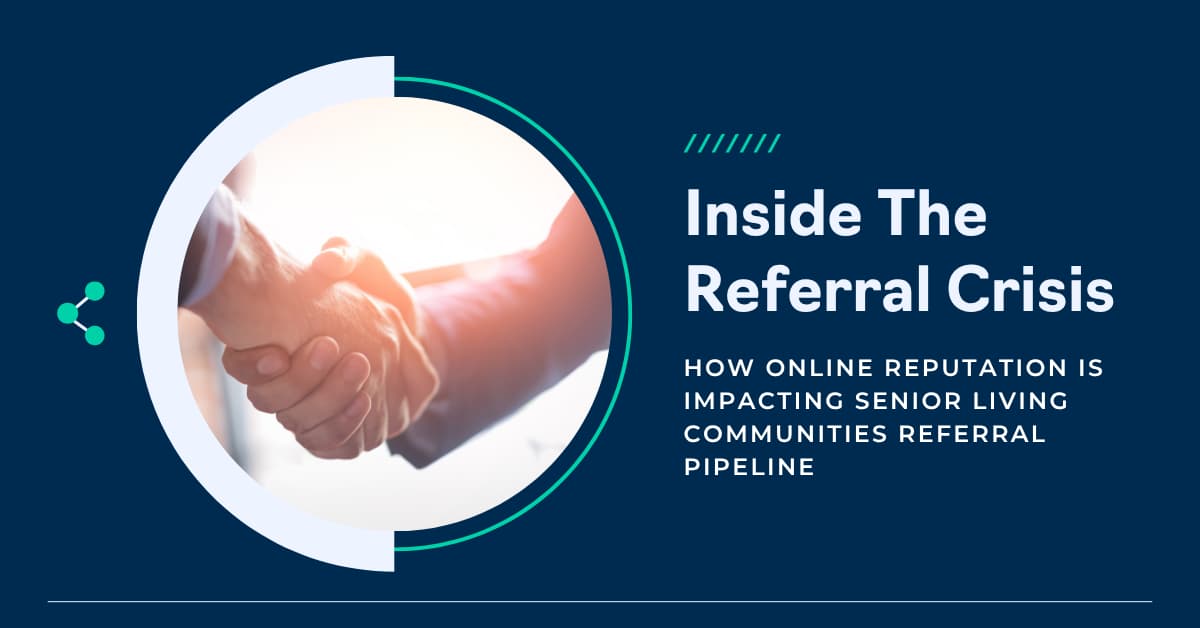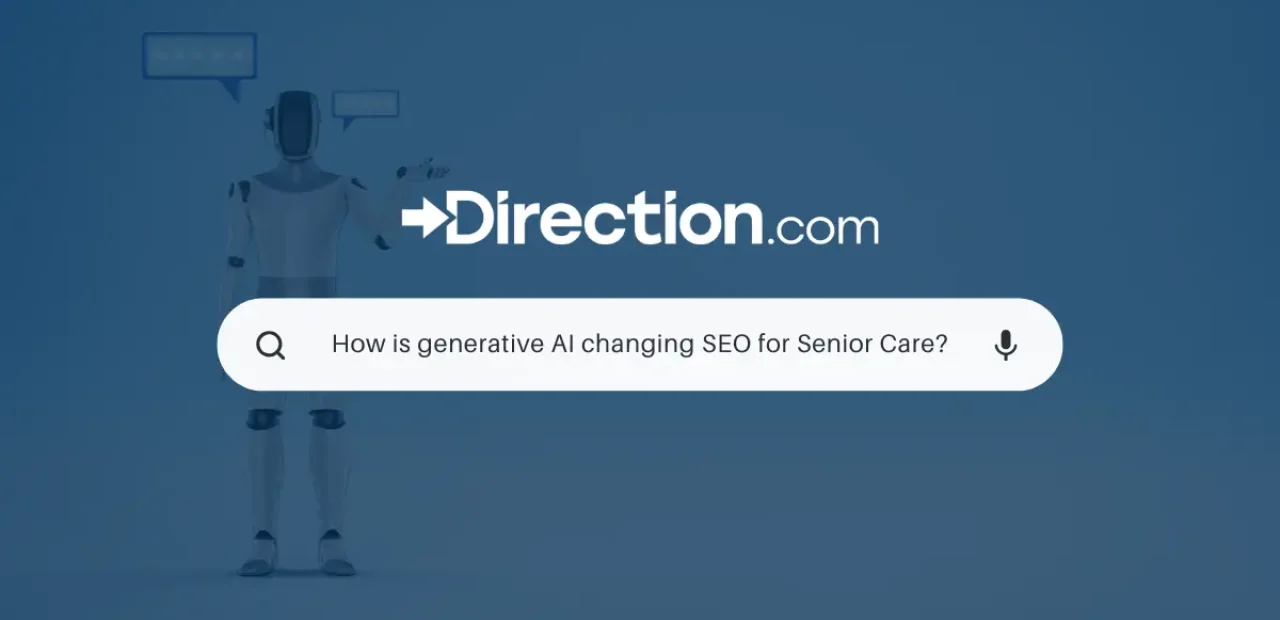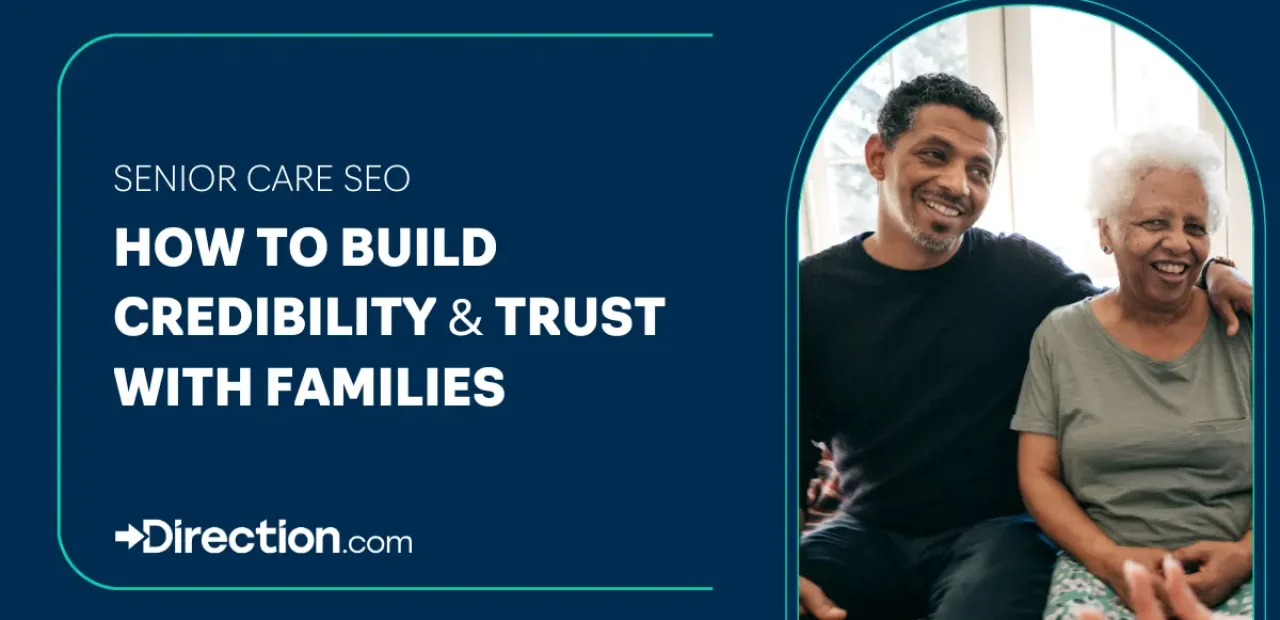Senior living reputation management refers to the ongoing process of monitoring, influencing, and improving how a senior living community is perceived online and offline. It involves managing reviews, social media presence, search engine visibility, and community feedback to build trust with prospective residents, families, and referral sources.
Hospital referrals down 47%.
Physician networks sending half their usual volume.
Insurance partnerships drying up.
If these numbers reflect your facility’s reality, you’re experiencing the quiet crisis destroying senior care referral pipelines nationwide.
The brutal truth? Your traditional referral sources aren’t just declining – they’re actively choosing your competitors based on what they find online. Without proper senior living SEO and reputation management, you’re invisible to the very professionals who used to send you residents.
Here’s what’s happening: That sterling 20-year relationship with your choice referral doctor means nothing when his office manager Googles your facility and finds three one-star reviews at the top of the page.
Those hospital discharge planners who knew you by name? They’re now required to check online ratings before making referrals.
Insurance case managers? They’re comparing your 3.2-star average to your competitor’s 4.7 rating during placement meetings.
Senior living reputation management isn’t about vanity metrics or digital marketing buzzwords. It’s about survival. Because while you’re reading this, referral sources are making decisions based on what they see online – not what they know about your care quality.
The Invisible Force Destroying Your Referral Network
The most dangerous part? You won’t see it coming. Referral partners don’t call to say they’ve stopped recommending you. They don’t schedule meetings to discuss your online reviews. They simply… stop sending patients.
I’ve analyzed dozens of facilities’ referral patterns, and the decline follows a predictable trajectory. First, a few negative reviews appear. You dismiss them – “disgruntled family member,” “unreasonable expectations.” Six months later, referrals drop 15-20%. You blame market conditions, new competition, seasonal fluctuations.
By month twelve, you’re down 40% or more. Panicking, you reach out to longtime referral sources. They’re polite but evasive. The truth they won’t tell you? Their compliance protocols now require reputation verification. Their malpractice insurance insists on it. Their supervisors mandate it.
The pattern repeats everywhere I look: Facilities with poor online reputations see referral declines of 40-60% within 18 months. Not because their care deteriorated. Not because relationships soured. Because their digital presence became a liability no professional will risk associating with.
The Referral Crisis by the Numbers
How poor online reputation destroys referral pipelines
43%
Average referral decline with poor reviews
84%
Healthcare pros check reviews before referring
73%
Physicians won’t refer below 4 stars
92%
Families read reviews before choosing
Bottom Line: Your online reputation directly controls your referral pipeline
How We Got Here: The Death of Traditional Referral Networks
Twenty years ago, I watched senior care thrive on handshakes and hospital relationships. Discharge planners knew facility administrators personally. Physicians toured your building before referring. Insurance companies evaluated you based on inspections, not internet reviews.
That world is dead.
The shift started subtly. First, younger discharge planners began “quick checking” facilities online. Then physicians’ offices implemented “reputation verification” protocols. Insurance companies added “online presence requirements” to their networks. By 2020, the transformation was complete – what families find online became more important than decades of professional relationships.
Research confirms what I’m seeing firsthand: 84% of healthcare professionals now check online reviews before making referrals. Not sometimes. Not occasionally. Nearly every single time.
The Death of Traditional Referrals
How decision-making shifted from relationships to reviews
2000s: The Handshake Era
Personal relationships drove 95% of referrals
- • Hospital tours & lunches
- • Physician office visits
- • Insurance rep meetings
2010s: The Digital Shift
Online research enters the equation
- • Quick Google checks
- • Review verification
- • Digital + relationships
2024: Reviews Rule Everything
Online reputation drives 70%+ of decisions
- • Mandatory review checks
- • Star rating minimums
- • Digital-first decisions
The shift is complete: Online reputation now controls your referral destiny
When Quality Care Isn’t Enough Anymore
Three months ago, I met with Sunset Gardens’ CEO. Forty years of exceptional care. Zero citations. Outstanding state survey results. Their referrals had plummeted 52% in one year.
“We provide incredible care,” he insisted, showing me resident satisfaction scores.
I pulled up their Google listing. 2.8 stars. Seven recent negative reviews, zero responses. Top review: “AVOID THIS PLACE.”
His face went pale. “But that reviewer’s mother only stayed two days before transferring to the hospital. It wasn’t even about our care.”
Exactly. It wasn’t about their care. But every referral source who searched them saw that review first. Every family member evaluating options found that warning. Every professional making recommendations discovered that red flag.
Within 90 days of implementing reputation management, their referrals increased 34%. Not from improving care – they were already excellent. From controlling their online narrative.
The Numbers That Should Terrify You
Let me share the data that keeps facility administrators awake at night:
- 92% of families read online reviews before choosing senior care – up from 61% in 2019
- 73% of physicians won’t refer to facilities with below 4-star ratings
- 68% of discharge planners check Google reviews during placement decisions
- 81% of insurance case managers factor online reputation into network decisions
But here’s the statistic that should truly frighten you: Facilities with poor online reputations experience an average 43% decline in professional referrals within 12 months. Your lifeline to new residents isn’t just fraying – it’s being severed.
⚠️ CRITICAL WARNING
Every Day You Wait, More Referrals Choose Your Competitors
Right Now:
A physician is Googling your facility and finding outdated information. A discharge planner sees your 3.2-star average and moves to the next option. An insurance case manager crosses you off their preferred provider list. Every moment costs you residents.
Stop the Bleeding. Start the Recovery.
In just 30 minutes, we’ll audit your online reputation, identify the gaps costing you referrals, and create a customized recovery plan that gets results.
Secure Your Strategy Call Now →41%
Average referral increase
6
Months to results
The traditional referral model assumed trust based on professional relationships. The new model demands digital proof. When Mrs. Henderson’s family asks their physician for facility recommendations, he doesn’t just recall your administrator’s friendliness. He checks your reviews on his phone. Right there. During the appointment.
Your First 48 Hours: Stopping the Bleeding
Stop reading this and check your Google Business listing. Right now. I’ll wait.
Shocking, isn’t it? Those reviews you haven’t responded to. That outdated information. The photos from 2018. This is what every referral source sees before deciding whether to trust you with their patients.
Here’s your emergency triage plan:
- Hour 1-2: Claim and verify all directory listings (Google, Yelp, Facebook, A Place for Mom)
- Hour 3-4: Update every piece of information – hours, photos, services, contact details
- Day 1: Respond to every review from the past 90 days, starting with negative ones
- Day 2: Implement a review request system for satisfied families
This isn’t comprehensive reputation management – it’s battlefield medicine for your dying referral network.
The Senior Living Reputation Management System That Rebuilds Referral Pipelines
Your Reputation Recovery Toolkit
The 4-pillar system that rebuilds referral pipelines
Monitoring & Response
- ✓ 24-hour response protocol
- ✓ Multi-platform tracking
- ✓ Personalized responses
Review Generation
- ✓ Automated request system
- ✓ QR code deployment
- ✓ Family engagement tools
Strategic Display
- ✓ Website review widgets
- ✓ Social media amplification
- ✓ Testimonial showcases
Negative Mitigation
- ✓ Professional responses
- ✓ Service recovery protocols
- ✓ Trust rebuilding strategies
Result: 41% average referral increase in 6 months
When implemented systematically across all four pillars
Triage stops the bleeding. Systematic reputation management rebuilds your referral network stronger than before. Here’s the framework I’ve used to help facilities increase referrals by an average of 41% within six months:
The Foundation: Monitoring and Response
Every review, on every platform, demands a response within 24 hours. Not generic corporate speak – authentic, specific responses that show you genuinely care. When Dr. Mitchell’s office checks your reviews, they need to see an engaged, responsive organization.
The Acceleration: Review Generation
Hoping for positive reviews is like hoping for referrals – it’s not a strategy. You need systems that consistently generate 5-star reviews from satisfied families. Text messages at discharge. Email follow-ups after positive care conferences. QR codes that make reviewing effortless.
The Amplification: Strategic Display
Those glowing reviews hidden on page three of Google? Worthless. Strategic reputation management brings your best reviews front and center. Review widgets on your website. Testimonial walls in your lobby. Social media campaigns highlighting resident stories.
The Protection: Negative Review Mitigation
Bad reviews happen. How you handle them determines whether they destroy referrals or demonstrate professionalism. I’ve seen thoughtful responses to negative reviews actually increase trust among referral sources who appreciate transparency and accountability.
Why Reputation Management Saves Every Referral Channel
Here’s what most facilities miss: Online reputation doesn’t just affect direct consumer inquiries. It influences every single referral source:
Physicians research you before referring patients. Poor reviews equal lost referrals.
Hospital discharge planners face liability sending patients to poorly-reviewed facilities.
Insurance companies increasingly require minimum star ratings for network participation.
Home health agencies check reviews before partnering with facilities.
Elder law attorneys investigate online reputation before recommending clients.
Even your strongest professional relationships can’t overcome a toxic online presence. Dr. Stevens might love your administrator, but when families research his referral and find terrible reviews, they question his judgment. He won’t risk his reputation on yours.
How Star Ratings Kill (or Save) Your Referrals
Referral source behavior by your facility’s star rating
100%
50%
0%
2-3 Stars
3-3.5 Stars
3.5-4 Stars
4-4.5 Stars
4.5-5 Stars
Percentage of referral sources willing to recommend
The 4-Star Threshold
Below 4 stars, you lose 73% of physician referrals immediately
Making Reputation Management Your Daily Reality
Reputation management isn’t a project – it’s a practice. Like medication management or care planning, it requires daily attention. The facilities reversing referral decline share three habits:
Morning Review Check: Start each day reviewing overnight feedback. Set Google Alerts for your facility name. Check all major review platforms before 9 AM.
Afternoon Response Time: Dedicate 30 minutes after lunch to responding to reviews. Use templates for efficiency, but personalize every response.
Weekly Reputation Report: Every Friday, assess your star ratings, review velocity, and response rates. Track progress like you track census.
The difference between thriving and dying in senior care increasingly comes down to 30 minutes of daily reputation management.
Your Referral Network Is Dying. Here’s Your Choice.
Right now, while you’re reading this, a physician is Googling your facility. A discharge planner is scrolling through your reviews. An insurance case manager is comparing your ratings to competitors.
What will they find?
You can pretend online reputation doesn’t matter. You can hope traditional relationships will save you. You can watch your referrals continue their death spiral.
Or you can take control.
The facilities we work with who implement comprehensive SEO and reputation management see referral increases of 30-50% within six months. Not because they suddenly provide better care. Because they finally let the world see the quality that was always there.
Your referral sources want to send you residents. Give them a reason to trust you again.






